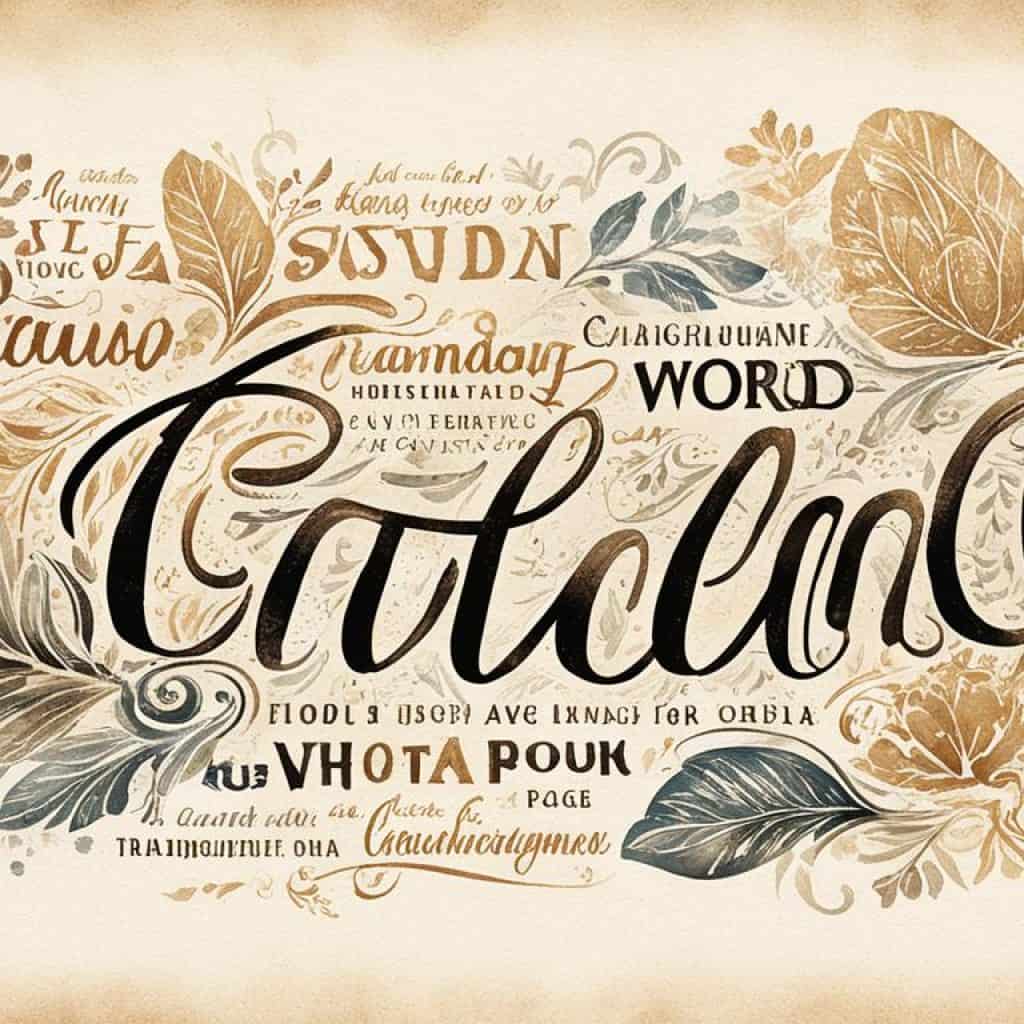Ever wondered about Filipino and Tagalog? Are they the same language with different names, or entirely different? It’s a question that catches many off guard. We’re about to dive into the unique world of these languages. You’ll learn about their common roots and what sets them apart.
Key Takeaways:
- Filipino is the declared national language of the Philippines, while Tagalog is the language from which Filipino was derived.
- Filipino is an upgraded version of Tagalog, incorporating words borrowed from Spanish and English.
- Tagalog is primarily spoken in Manila and its neighboring provinces, while Filipino is the standardized national language.
- Understanding the similarities and differences between Filipino and Tagalog sheds light on the linguistic diversity and cultural heritage of the Philippines.
- The evolution of languages, such as Tagalog and Filipino, is vital for their survival and continued relevance.
A Brief History of the Filipino Language
The Filipino language has a rich history. It comes from the Philippines’ diverse culture and languages. Learning about its evolution helps us understand the country’s unique heritage and identity.
In the 1930s, the Philippine government saw a need for a national language. This language would unite the various dialects spoken across the islands. Tagalog, from Metro Manila and surrounding areas, was chosen because many people spoke it.
Yet, the constitution recognized the Philippines’ geographical diversity. It noted that not everyone spoke Tagalog. So, it suggested creating a national language in the future.
In the 1970s, efforts to create a standard national language named “Pilipino” began. It later became known as the Filipino language. Filipino aimed to include parts from other Philippine languages. This was to represent the whole nation. Adding diverse linguistic elements helped grow the vocabulary.
“Filipino language was enriched by modifying and incorporating new words from Chinese, Malay, English, and Spanish.”
Over time, Filipino also borrowed words from Chinese, Malay, English, and Spanish. This mix of languages shows the historical interactions and cultural exchanges in the Philippines.
Today, Filipino is the national language of the Philippines. It is taught in schools nationwide. Filipino unites people from different regions and backgrounds. It fosters a sense of unity and shared identity.
The Similarities and Differences between Tagalog and Filipino
Tagalog and Filipino may sound the same but they are different. Tagalog is the base for Filipino, considered an update. Both share a lot of words and grammar. But Filipino adds words from Spanish and English and supports transliteration. It has a more open vocabulary, welcoming words from other languages. This makes Filipino more flexible and modern than Tagalog.
Similarities between Filipino and Tagalog
There are key similarities between Filipino and Tagalog. Tagalog lays the groundwork, giving Filipino its structure and basic words. Many words and grammar rules are the same in both. This makes it easy for speakers to understand each other.
Example: **Both Filipino and Tagalog use the word “bahay” to mean “house”.**
This common ground makes communication smooth among Filipinos.
Differences between Filipino and Tagalog
Even though they are similar, Filipino and Tagalog have their differences. A big difference is Filipino’s use of words from Spanish and English. This adds to Filipino’s vocab, making it richer in expression.
Example: **In Filipino, the word “kompyuter” (computer) is borrowed from English, while in Tagalog, the word is “kompuyuter”.**
Also, Filipino’s transliteration allows borrowing from Western languages but keeps the Tagalog script. This makes Filipino adaptable and up-to-date.
Comparison between Tagalog and Filipino
Let’s compare a sentence in Tagalog and Filipino:
| Tagalog | Filipino |
|---|---|
| Maganda ang bahay. | Maganda ang bahay. |
| (The house is beautiful.) | (The house is beautiful.) |
The sentences are the same, showing shared grammar. But Filipino is more versatile in spelling and pronunciation than Tagalog.
The contrasts between Tagalog and Filipino add to the Filipino language’s uniqueness and richness. They reflect the cultural and linguistic diversity of the Philippines.
A Comparison of Tagalog and Filipino
To understand the differences between Tagalog and Filipino, we’ll compare sentences. This shows how Filipino evolved from Tagalog.
Tagalog Sentence: Ang pula na ito ay napakaganda.
Filipino Translation: Ang **kulay** na ito ay napakaganda.
The Tagalog sentence says “pula” which means red. The Filipino sentence uses “**kulay**”, meaning color. This shows Filipino’s flexibility. It borrows words from Spanish and English.
Filipino is flexible in sentence rules. It allows different spellings and sounds. This way, many regional dialects fit in. It makes the language easily adaptable.
Filipino gets words from Spanish and English due to history. Tagalog sticks to its original words. This shows the deep roots of Tagalog language.
Tagalog vs. Filipino Sentence Structure and Vocabulary:
| Tagalog | Filipino |
|---|---|
| Follows a stricter sentence structure. | Allows variations in sentence structure. |
| Primarily uses native Tagalog words. | Incorporates Spanish and English loanwords. |
| Pronunciation is based on Tagalog phonetics. | Accommodates variations in pronunciation. |

Comparing Tagalog and Filipino reveals the growth of Filipino. It highlights cultural impacts on its vocabulary and structure. This evolution shapes Filipino into a national language.
The Evolution of Tagalog to Filipino
The journey from Tagalog to Filipino began with Spanish colonization. The Spanish made their language the main way to communicate. Then, the United States took control and saw the need for a national language.
The choice was Tagalog, spoken in Manila and neighboring areas. It became the base for the national language, first called “Pilipino.” In 1987, it was renamed “Filipino.” This new name marked the start of adding words from Western languages.
Now, Filipino is the official language of the Philippines. It mixes in words from other languages and connects people from different regions. This language celebrates the country’s diverse culture.
Although Filipino evolved from Tagalog, they are still alike in many ways. Both languages use similar words and grammar. But Filipino is updated with words from Spanish and English, making it more versatile.
The table below illustrates the development of Tagalog to Filipino:
| Tagalog | Filipino |
|---|---|
| Makinig | Makinig |
| Tumakbo | Tumakbo |
| Mabilis | Mabilis |
| Sarap | Sarap |
| Kumain | Kumain |
| Maganda | Maganda |
| Paalam | Paalam |
As shown above, many Tagalog words remain the same in Filipino. The addition of Western words and filipino’s adaptability make it suited for today’s world.
The Role of Language in Filipino Identity
The Filipino language is key in shaping the Filipino identity and culture. It connects Filipinos everywhere, making them feel as one. In the Philippines, Filipino is both taught and widely spoken, showing its everyday importance.
Filipino, the national language, shows the Filipino people’s resilience. It carries their history, values, and dreams, despite their different backgrounds. Filipinos feel more connected and understand their roots better by embracing their language.
Filipino language is more than just for talking; it’s a source of pride. Through it, Filipinos share their feelings and ideas, adding to their rich culture.
“Language is not just a means of communication; it is a reflection of one’s identity and a key to understanding one’s cultural heritage.”
The Filipino language helps build the nation. It brings together various ethnic groups, creating a sense of togetherness. This common language allows Filipinos to work together for progress and development.
It also keeps Filipinos abroad linked to their homeland. By speaking Filipino, they keep their culture alive for future generations. This strengthens their identity and sense of community.
The Importance of Preserving Filipino Languages
The Philippines is rich in languages, reflecting its cultural diversity. Each regional dialect adds to the national identity. They make communities feel proud and connected.
Promoting these dialects alongside Filipino honors our cultural richness. It lets us celebrate our unique linguistic heritage. And it helps us appreciate the stories from different regions.
Bilingual education in schools is crucial. It teaches students both Filipino and their local dialects. This way, we keep our languages alive while staying united under one national language.
“Preserving the linguistic diversity of the Philippines is a testament to the country’s commitment to inclusivity and cultural appreciation.”
In conclusion, the Filipino language deeply influences our identity and culture. As our national language, it connects us and fosters unity. It gives us a way to express ourselves and cherish our heritage. By keeping regional dialects alive, we celebrate our diverse voices. This shows our dedication to including and valuing all cultures.
| Benefits of the Filipino Language in Filipino Identity | Importance of Preserving Regional Dialects |
|---|---|
| 1. Unifies Filipinos within and outside the Philippines | 1. Honors the cultural tapestry of different regions |
| 2. Promotes a sense of shared experiences and cultural heritage | 2. Ensures the voices and stories of different regions are heard |
| 3. Facilitates effective communication and collaboration | 3. Reinforces the commitment to inclusivity and cultural appreciation |
| 4. Acts as a source of pride and self-expression | 4. Celebrates the linguistic diversity of the Philippines |
Understanding Regional Dialects in the Philippines
The Philippines is not just about Tagalog and Filipino. It is also home to a rich variety of regional dialects. Each area boasts its own language or dialect. These are shaped by local history, culture, and the land. This diversity shows the rich language tapestry across the islands.
Some well-known regional dialects include:
- Cebuano
- Ilocano
- Bicolano
- Hiligaynon
- Waray
These dialects differ greatly in how words are used and pronounced. They add a unique flavor to the nation’s language scene. They are deeply loved and used by their communities.
“Language is the road map of a culture. It tells you where its people come from and where they are going.” – Rita Mae Brown
Diving into these dialects opens up new understandings. We learn about the history, customs, and identities of various Filipino groups. This helps us grasp the nation’s rich cultural blend better.
Regional dialects in the Philippines are key to the country’s language heritage. They are more than just ways to talk. They bring pride and a sense of belonging to those who speak them.
Exploring Old Tagalog Words
Old Tagalog words show us the rich history of the Philippines. These words, though lost over time, offer deep insights. They help us understand past expressions and vocabulary.
The word alili means “violet” in Old Tagalog. It reveals how nature influenced the language. This reflects the cultural and historical setting of the Tagalog language.
The term baro translates to “tunic” or “shirt”. It shows how clothing was important in Tagalog people’s daily lives.
The word bukad means “open flower”. It shows the Tagalog people’s love for nature. They appreciated the beauty of flowers immensely.

These words highlight how the Tagalog language has evolved. They connect us to the history and culture of the Philippines. They make the language’s evolution deeply meaningful and intriguing.
Languages Must Evolve to Survive
For languages like Tagalog and Filipino to keep thriving, they must evolve. They need new words, structures, and influences to stay alive and useful. This keeps them as effective ways to communicate.
When languages evolve, they adapt to new needs and views of their speakers. As the world changes, especially with new tech, we see new ideas. This requires fresh vocabulary and ways to express these thoughts accurately.
The shift from Tagalog to Filipino is a perfect example of this change. Filipino takes up words from Spanish and English, making it more comprehensive. By accepting external influences, Filipino becomes a language that welcomes many.
“Language is not a fixed entity; it is a living, breathing entity that reflects the collective experiences and cultural heritage of its speakers.”
A language has to stay relevant and flexible to survive. If a language stops evolving, it may become outdated. In a world where we all need to communicate, a language’s ability to adapt is key.
Languages also hold our cultural heritage. By changing and taking in new changes, they keep their identity. This balance lets communities keep their uniqueness while connecting globally.
To sum up, languages like Tagalog and Filipino need to grow and change to survive. They must welcome new conditions and influences to stay important. Filipino’s growth from Tagalog shows how languages can flow and change. Through this process, cultural heritage is kept alive and well.
LinguaLinx: Language Translation Services
LinguaLinx provides top-notch translation services globally. With over two decades of expertise, we excel in translating vital documents and webpages into more than 200 languages. Need language localization for Filipino or Tagalog? Count on LinguaLinx to bridge the communication gap with your audience.
Your translation must be spot-on and culturally aware. We follow ISO 17100 standards strictly. Our skilled linguists and experts ensure your message reaches your customers accurately. They keep the original context and meaning intact.
We offer broad translation services touching many fields like marketing, legal and tech sectors. By using cutting-edge tools and techniques, we guarantee high-quality and uniform translations. We also pay close attention to specific industry jargon and subtleties.
Our focus on excellence and client happiness makes us a reliable partner. We collaborate intimately with our clients. This helps us grasp their unique needs and offer tailored solutions that fit perfectly.
Collaborating with LinguaLinx for your professional translation projects lets you connect with more people worldwide. Our skilled team ensures your brand’s message is clear to international customers. We help you fulfill your business objectives with precision and care.
Why Choose LinguaLinx for Your Translation Needs?
- Over 20 years of experience in the translation industry
- Specialization in over 200 languages
- ISO 17100 compliant translations
- Experienced linguists and localization experts
- Industry-specific translations for various sectors
- Utilization of advanced translation tools and technologies
- Commitment to quality and customer satisfaction
Choose LinguaLinx for dependable language translation services. Reach out to us today to begin!
Conclusion
Tagalog and Filipino are similar yet have their own unique traits. Tagalog is the base of the Filipino language, acknowledged as the national language of the Philippines. Filipino takes in words from Spanish and English, making it versatile.
It’s key to know the differences and similarities between Tagalog and Filipino to appreciate the Philippines’ rich culture and language diversity. They have many common words and structures. However, Filipino goes further by adopting elements from other languages.
The growth from Tagalog to Filipino demonstrates the Filipino people’s strength and flexibility in keeping their cultural and linguistic identity alive. Even with many regional dialects, Filipino brings people together across the Philippines. The emergence of Filipino as the national language highlights the unity and shared experiences of its people.







Add comment